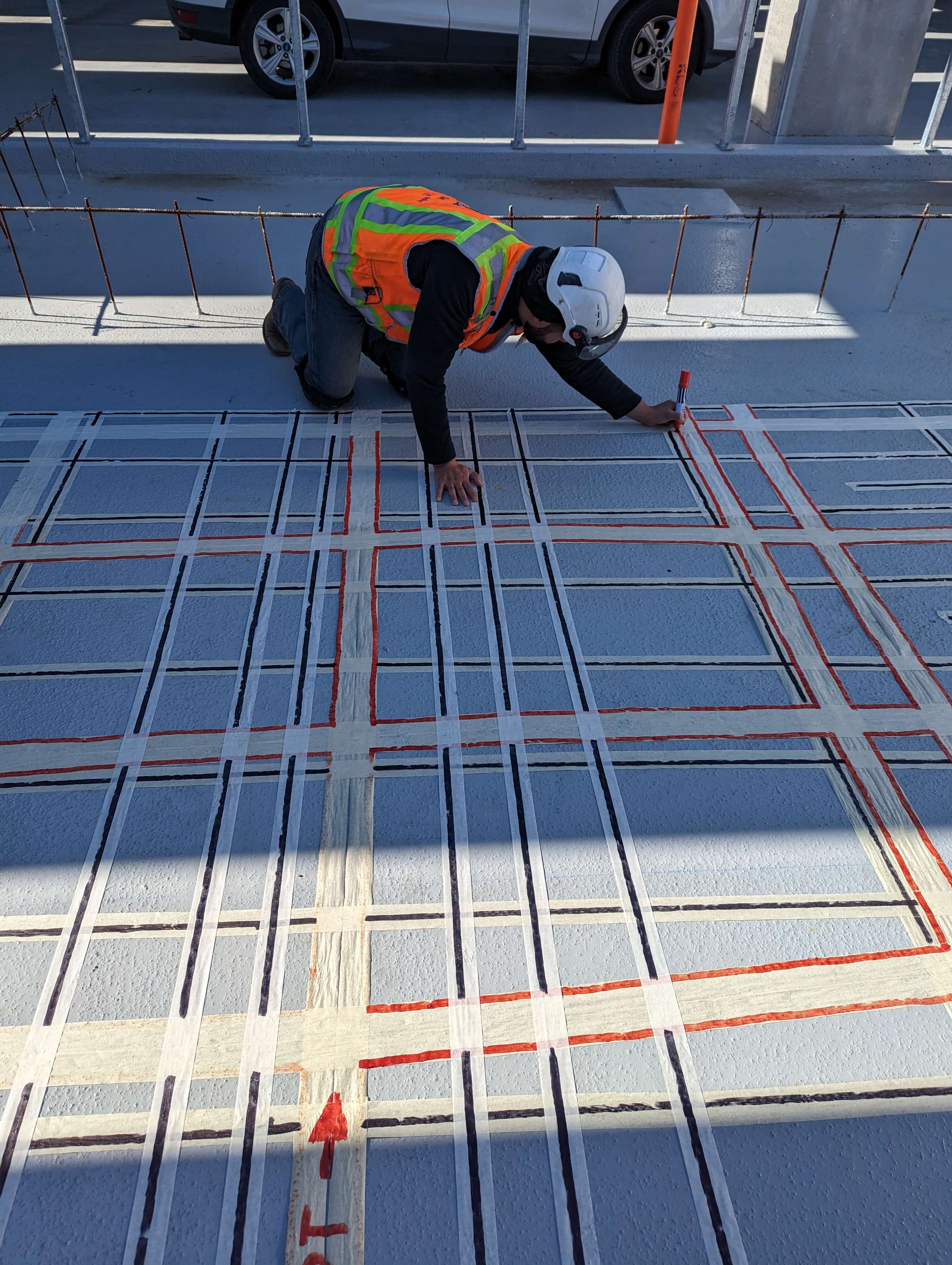Advanced Concrete Scanning Techniques: Making Certain Structural Stability
Advanced Concrete Scanning Techniques: Making Certain Structural Stability
Blog Article
Introduce the Transformative Power of Concrete Scanning in Maximizing Effectiveness and Safety And Security
Concrete scanning has actually emerged as an essential device in the building sector, supplying unmatched benefits in boosting task effectiveness and making certain safety and security requirements. The transformative power of concrete scanning exists in its capability to provide real-time information and detailed understandings, reinventing just how projects are planned and implemented.
Importance of Concrete Scanning
Ensuring the structural stability and safety and security of construction projects begins with the critical action of carrying out extensive concrete scanning. Concrete scanning is a non-destructive method made use of to find and map subsurface aspects within concrete structures. This process is necessary in identifying possible dangers, such as rebar, post-tension cable televisions, and avenues, that may be hidden within the concrete. By making use of advanced innovations like ground-penetrating radar (GPR) and electro-magnetic induction, construction teams can accurately find these elements without triggering any type of damage to the structure.
Furthermore, concrete scanning helps in optimizing job timelines and budget plan by preventing unanticipated expenses and hold-ups that may develop due to unanticipated blockages within the concrete. Ultimately, investing in detailed concrete scanning is a proactive strategy that enhances both efficiency and safety and security in construction tasks.
How Concrete Scanning Works
Concrete scanning runs as a critical tool in building jobs by employing innovative innovations to detect and map subsurface aspects without triggering structural damages. Ground Passing Through Radar (GPR) and Electromagnetic Induction (EMI) are 2 key methods made use of in concrete scanning. GPR jobs by emitting high-frequency radar pulses into the surface, which bounce back when they experience subsurface items or spaces. The moment considered the signal to return suggests the depth and place of the objects. EMI, on the various other hand, makes use of electro-magnetic fields to determine differences in product compositions, such as determining rebar or channels within concrete frameworks.
During the scanning process, the data gathered is evaluated in real-time, enabling immediate recognition of possible dangers or obstacles under the surface area. By using these innovative modern technologies, concrete scanning considerably minimizes the danger of pricey damages and injuries on construction websites.
Benefits of Concrete Scanning
One of the primary advantages of concrete scanning is the capacity to discover and locate embedded objects such as rebar, post-tension wires, and channels properly. Concrete scanning assists in planning and developing much more successfully, as it supplies precise details concerning the place and depth of architectural components.

Instance Studies: Concrete Scanning Success

In an additional situation, a building and construction company utilized 3D concrete scanning to evaluate the problem old concrete frameworks in a historical building. The detailed scans supplied important insights into the extent of wear and tear and helped focus on upkeep initiatives effectively. By proactively resolving locations of issue recognized with scanning, the company was able to prolong the life-span of the framework and make sure resident safety.
These study underscore the transformative power of concrete scanning in enhancing effectiveness, precision, and safety and security in construction tasks.
Executing Concrete Scanning in Projects
Implementing advanced scanning innovations during building and construction tasks has become progressively essential for boosting accuracy and safety and security. By incorporating concrete scanning into task preparation and execution, building groups can determine potential risks, such as rebar or post-tension wires, concealed within concrete frameworks. This proactive method reduces the risk of accidents, hold-ups, and pricey rework, eventually leading to extra efficient job timelines and budget plans.
To carry out concrete scanning effectively, task supervisors ought to work together very closely with knowledgeable scanning professionals to figure out one of the most ideal scanning methods for the certain job requirements. Involving scanning experts from the beginning of a job enables the team to develop comprehensive scanning strategies that attend to vital locations of issue and ensure comprehensive information collection.
Additionally, integrating concrete scanning into normal task operations can simplify decision-making processes, as real-time check data offers prompt insights right into the problem of concrete frameworks - Concrete Scanning. This data-driven approach assists in informed problem-solving and makes it possible for teams to make changes promptly, cultivating a society of performance and safety and security throughout the job lifecycle

Verdict
To conclude, concrete scanning plays a vital duty in enhancing efficiency and safety in building and construction tasks. By using innovative innovation to map and detect out underlying structures within concrete, this process aids to avoid my explanation costly blunders, ensure architectural integrity, and minimize dangers on site. With the capability to discover concealed aspects and supply precise data, concrete scanning confirms to be a beneficial tool for optimizing project end results and optimizing total success.
Concrete scanning is a non-destructive method utilized to spot and map subsurface aspects within concrete structures. Additionally, concrete scanning helps in optimizing project timelines and budget plan by staying clear of unanticipated prices and delays that may develop due to unforeseen obstructions within the concrete. One noteworthy case research study involves a large-scale remodelling project where concrete scanning played an essential duty in guaranteeing project success.In one more situation, a building business utilized 3D concrete scanning to evaluate the condition of maturing concrete structures in a historical structure. By integrating concrete scanning right into project planning and execution, construction groups can identify potential dangers, such as rebar or post-tension cable televisions, hidden within concrete frameworks.
Report this page